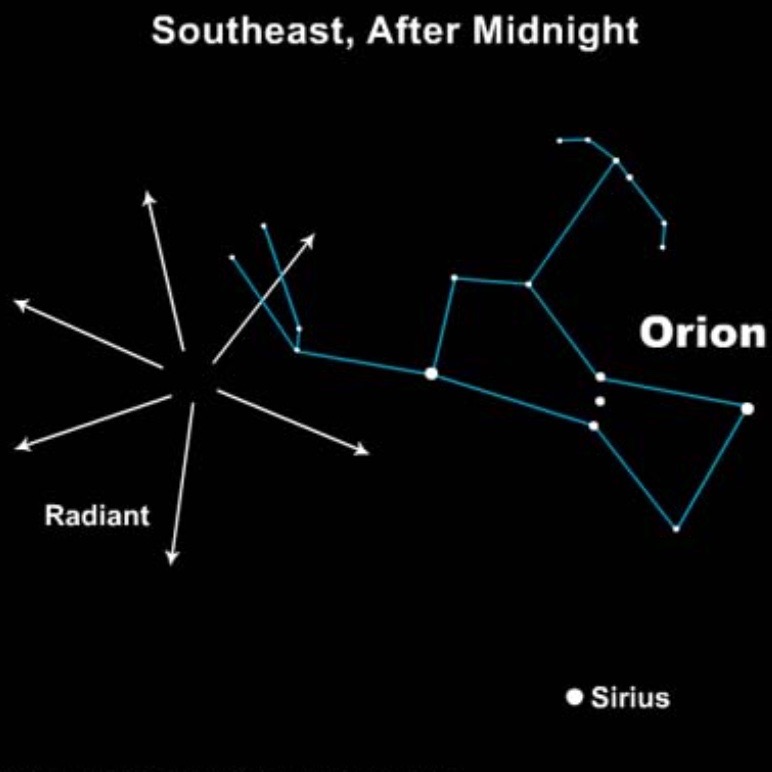The Orionid meteors come from Halley’s Comet. This famous comet orbits approximately every 76 years and dust particles are expelled from the comet’s nucleus and The Earth intercepts this stream of comet debris in late October every year.

The Orionids produced from Halley’s Comet are produced when particles from the comet are in an inbound orbit which means the meteors are moving in one direction, the Earth is essentially moving in the opposite direction, and the combined speeds produce fast-moving meteors. But we also encounter its debris from its outbound orbit when it’s leaving the inner solar system; that point is reached in early May. This debris field produces the Eta Aquarids meteor shower.
The 2022 Orionid meteor shower peaks on the evening of October 20-21. The Orionids normally generated 10 to 20 meteors per hour at its peak when viewed from an area with no ambient lighting. Although the number of meteors per hour is average for a meteor shower, the Orionids However, this meteor shower is commonly referred to as the most colorful one of the year. This is because the meteors are traveling at roughly 148,000 mph. Their speed is the reason for the colorful trails, and depending on their speed, they may produce fireballs in the sky.
As with most meteor showers, the best time to observe the Orionids is between midnight and dawn. A waning crescent moon rises in the early morning hours. To enhance your viewing experience you should do the following:
Find a remote location that is away from ambient lighting (from cities and highways). Once there, it will typically take 15-20 minutes for your eyes to adjust to the darkness.
Dress appropriately for weather conditions, make yourself comfortable, and bring a comfortable chair, perhaps one that allows you to recline, since meteor watching requires patience.
the higher the radiant (point of origin) is above the horizon, the more meteors you will probably see.
According to NASA, the most spectacular meteors are likely to appear about 45 to 90 degrees away from Orion. Remember although meteors may appear to emanate from the radiant, they can appear in any part of the heavens.
This link will provide you with detailed location information: timeanddate.com/astronomy/meteor-shower/










